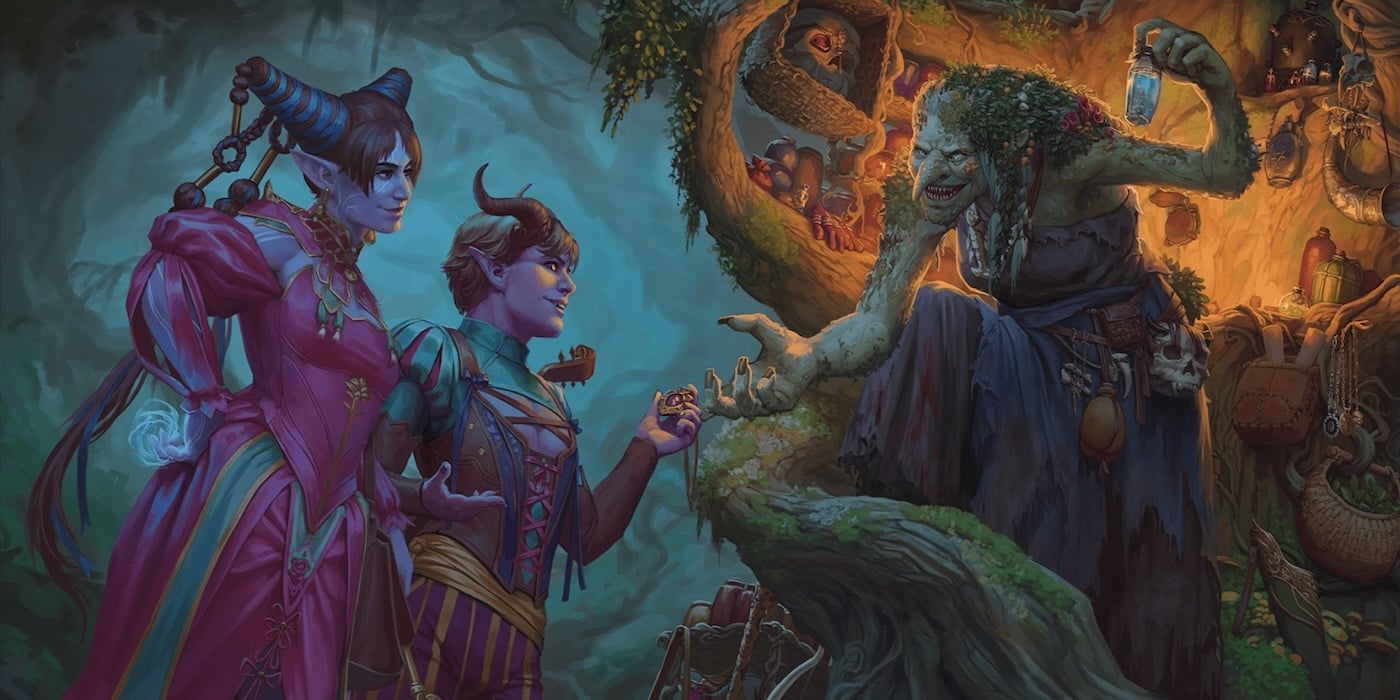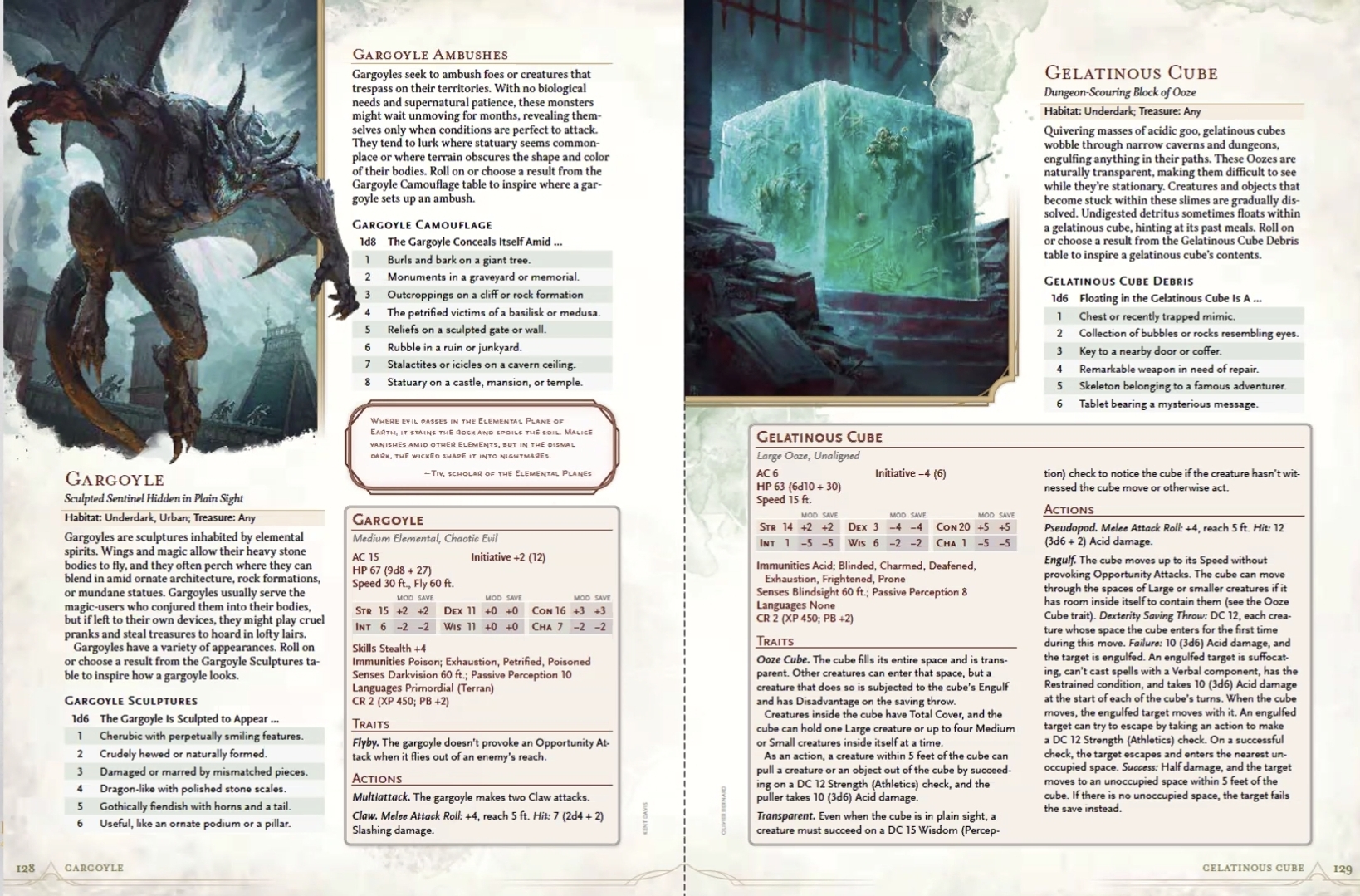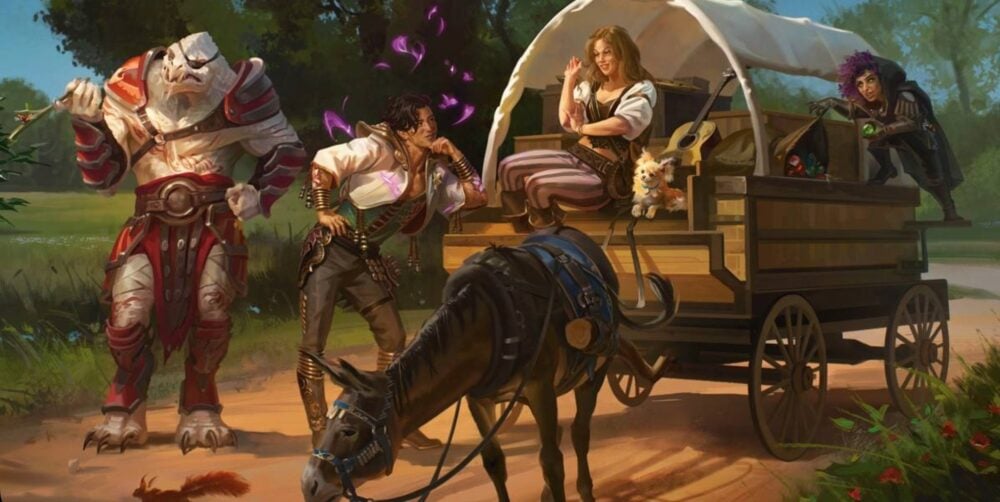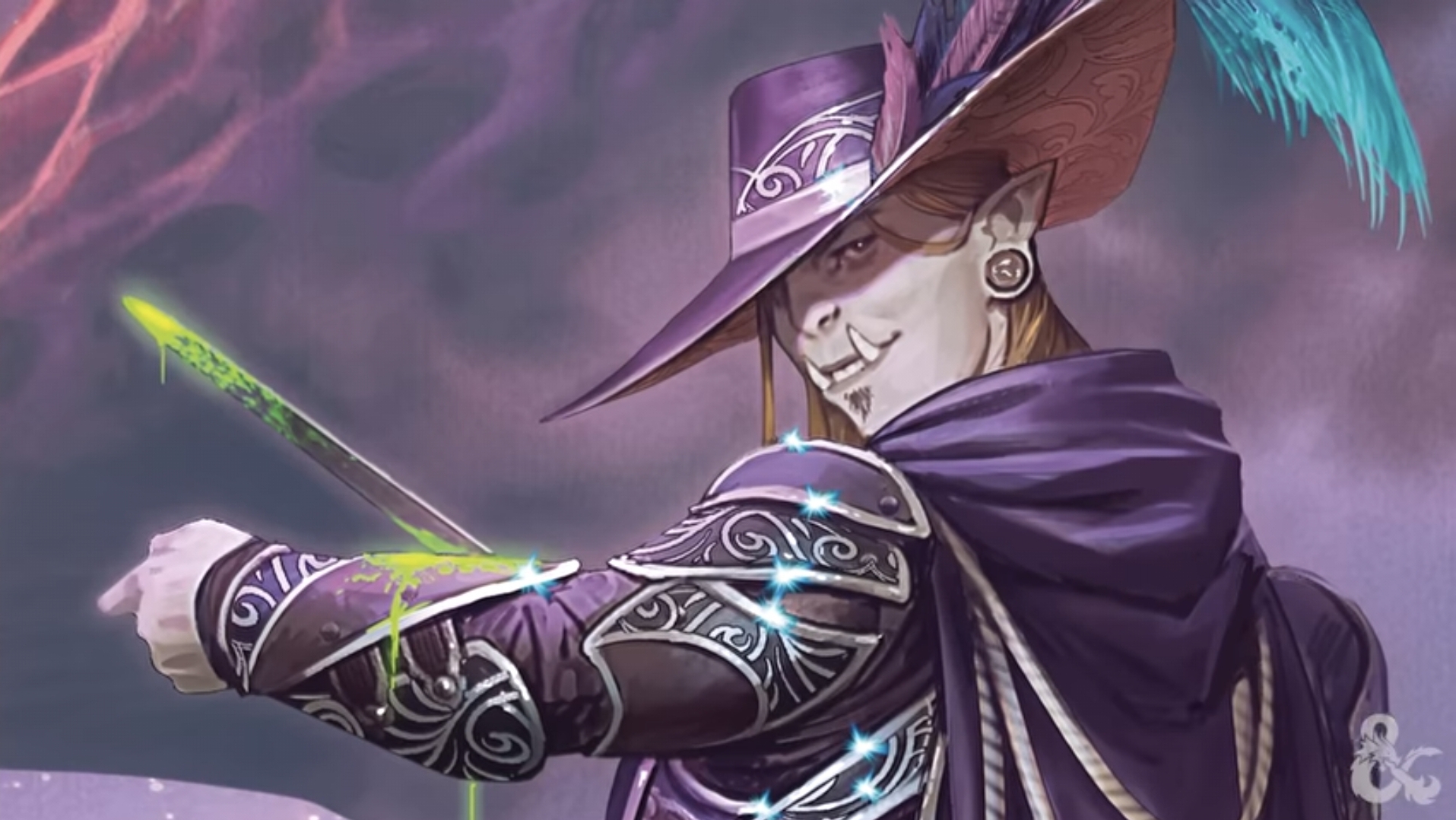We talked about how to min/max—now for the other end of the spectrum: here are tips on creating a character with roleplaying in mind.
As we all know, there are many ways to play D&D, and they’re all valid. You might be a min/maxing power gamer, or just there to show up and be social. Some people really get into the roleplaying side of things. But how do you really get into it?
If you weren’t a theater kid, what can you do about roleplaying? Don’t worry, we’re here to help. And you won’t even have to learn even a single lyric from Rent, Hamilton, or Into the Woods. Here are five character creation tips for the roleplayers out there.
Write an Elevator Pitch
One of the best things you can do when making a character, is figure out how to summarize them quickly and precisely. WotC knows this, and has started incorporating this in the new monster stat blocks in the 2025 Monster Manual.
The picture above shows two examples of this. The gargoyle is referred to as a “sculpted sentinel, hidden in plain sight.” While a gelatinous cube is a “dungeon-scouring block of ooze.” These quick snippets tell you exactly what you’re dealing with in as little time as possible. The rest is just details.
It can be extremely beneficial to do this for your character. Because having a quick “elevator pitch” ready to go can help you (and the other players as well, but especially you) focus on the important parts of your character. You might be a “disgraced noble, fighting for revenge” or an “adventurous student of the arcane.” These are real broad definitions of what you do and what your character is into. Lock that in and you’ll have a great grounding point to come back to throughout your campaign.
If You’re Gonna Have a Backstory, Look For “By Croms”, By Crom
One of the most misunderstood things about a character’s backstory is its purpose. A good backstory helps give context to the character, giving you an idea of why your character does the things they do and how they feel about them. But a great backstory has little moments that inform your character’s present.
I call these the “by Croms.” This is a reference to Conan, whose relationship with Crom was an integral part of his backstory. And it’s usable. His backstory has a scene between him and his father in which his father says “your god is Crom.” And from there it sets the tone for Conan’s adventures. But how it most frequently shows up is in what Conan says, which is often “By Crom!” followed by whatever.
“By Crom! These tacos are good.” And so on. Look for things your character can say that color in details from their backstory, and you’ll have more depth than the guy with 50 pages of backstory that nobody cares about.
Think of Questions for the Other Characters in Your Party
They say one of the best ways to be interesting is to be interested. Whether or not you believe that to be true, taking an interest in the other characters in your party does wonders for your roleplaying. For one, it gives you something to talk about. For two, it establishes relationships and gives players a chance to bring in their own little character details.
With those two ingredients, you can roleplay a scene about basically anything. So it can be real helpful to think of questions your character would want to ask the others. Be curious, be open, be engaged.
Don’t Sleep on Weird Little Trinkets

The devil might be in the details, but so is the heart of good roleplay. A good detail can say much without you having to say a word. Simply taking out a knife that your parent gave you, or reaching for a holy symbol on your necklace can lend some character to any moment.
But often it’s the least mechanically significant details that can be mined for the most depth. I’m talking about the rando, weird little trinkets you get as part of your starting gear. If you have a quill, think about what color it is, what kind of feather it is—did it belong to a bird or a bird monster? All those weird little items are a goldmine for figuring out the specifics of your character.
Style, Style, Style
Clothes make the adventurer. And they make the roleplayer too. There’s a reason people can make whole careers (or side hustles at the very least) out of doing fan art and D&D character commissions.
That’s because we are all suckers for visuals. But even if you’re not an artist, you can still take the time to think about what your character wears, and how you’d want to describe it. Lean into the fantasy tropes—ask yourself what your clothes say about your character, and then let them say it loudly.
What are some of your go-to tricks for roleplaying?
Don’t Miss:
Read more at this site



